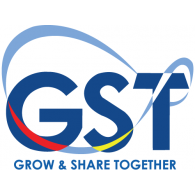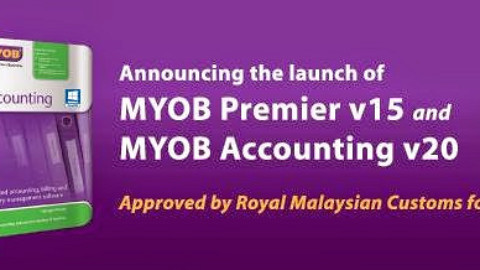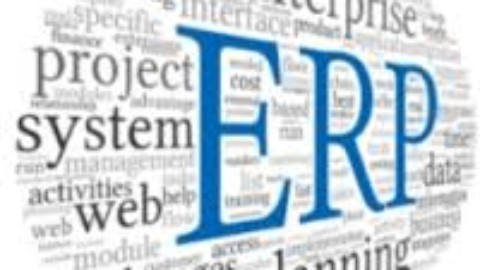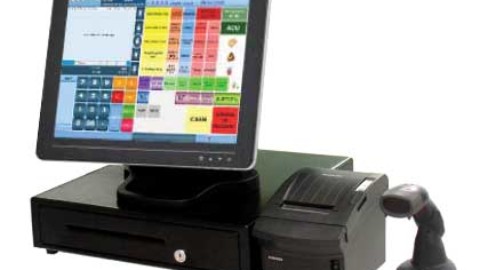HOW TO USE GST SOFTWARE
Stepping in India, using GST software will impact Tax Structure, Payment of Tax, Computation of Tax, Tax Incidence, etc. thus bringing a complete reform in the Indian Economy. GST is going to bring so many Vast changes in Taxation System such as:
- Subsume the Central and State level Taxes, like-Central Excise duty, Additional Excise duty, Service tax, Additional Custom duty and Special Additional duty, VAT or sales tax, Central Sales tax, Entertainment tax, Entry tax, Purchase tax, Luxury tax
- Levy of IGST on inter-State supply of goods and services.
- Levy of basic customs duty and IGST on Import of goods and such other changes……..
The Learning solution provides you:
- Theknow-how, Rules, Implications, Tax liabilities at one place so that you don’t need to access & read various weblinks and books on GST
- GST in the most interesting & simplest way
- Video classes, Web classes, Understanding through Power-Point Presentations, Flowcharts, Animations & Images
- Module-wise divisionbased on Registration of GST, Applicability of GST, Tax Incidences of GST and such other modules accordingly
- Various Levels of GST for every learner i.e. Beginners’ Level, Executive Level, Advanced Level
- Evaluationafter the Modules
- Certificationon Completion of course
Through GST-e-Learning, you get:
- the confidence about Goods and Service Tax,
- Have an edge over other Professionals
- Get the Expertiseon whole of the GST Scenario
Invoicing under GST
Using GST Software defines a transaction as ‘Supply’ when there is a transfer, exchange, rental, lease, barter, disposal or license of goods or services. Whenever a transaction takes place, a tax invoice has to be issued depending on the occurrence of any such event or within a prescribed time limit. Hence, every taxpayer registered under the GST network shall be required to issue a tax invoice for the supply of goods or services.
Tax invoices have to be raised under certain circumstances. In the case of supply of goods, the invoices shall be raised within the prescribed time as enumerated below.
- When there is actual movement of goods, then before or at the time of removal of such goods.
- If there is no movement involved, then earlier of delivery or making available of such goods.
- In case of successive issuance of goods, then earlier of each such issuance.
- On the receipt of goods when on GST is applicable on a reverse charge basis
- When goods are sold on an approval basis, then earlier of 6 months from the removal date or before or at the time of such removal.
Similarly, in the case of supply of services, the invoice has to be issued as follows, within the mentioned time.
- Within 30 days from the actual supply
- In case of continuous supply where due date can be ascertained, then 30 days from such due date
- In case of continuous supply where due date cannot be ascertained, then 30 days from actual payment date
- In case of cessation of supply before the contract ends, then at the time of such cessation.
The due date of 30 days is 45 days in case of banks and other financial institutions.
These invoices have to be issued in TRIPLICATE in the case of supply of goods, original for the recipient, duplicate for the transporter and triplicate copy for the supplier. Likewise, in case of supply of services, the invoices have to be issued in DUPLICATE, where the original will be meant for the recipient and the duplicate copy will be for the supplier.
How to Create GST Invoice
The Government of India has come out with a sample GST Invoice format. A sample format is shown below. It is better to issue invoices on the same lines as the example since your Input Tax Credit largely depends on the Invoice Number and its proper reporting. The serial number of the invoice forms the basis of mismatch or matching the invoices between the supplier and the receiver, giving a seamless, hassle-free credit flow.
- Name, address and the GSTIN of the supplier
- The nature of invoice (tax invoice, supplementary invoice or revised invoice)
- Invoice number (this shall be a consecutive alpha-numeric or numeric series, specific for a financial year)
- Date of Invoice
- Name, address and the GSTIN of the recipient
- Where the value of the goods exceeds Rupees Fifty Thousand and the recipient is an unregistered person, then name and address of such recipient and the delivery address of the consignment.
- Description of the goods or services
- HSN code of the goods or the Accounting Code of the Services
- Quantity of the goods or services
- Total value of the goods or services
- Rate of Tax on each item
- Tax amount charged, on account of CGST, IGST, and SGST to be shown separately under different columns
- Name of the supplying State and the place of supply
- Place of delivery
Simplifying GST
A Complete Solution for GST Compliance Management and GST Return India.
There will be many processes in GST. Some of them are as under:
- 1. Getting Data from GSTN Portal
- 2. Reconciling Input Tax Credit on Inward and Outward supplies
- 3. Adjusting Input tax credit on Advances etc
- 4. Determining Final Tax Liability
Timely Compliances and seamless processes cannot happen without a good tool to manage them and for that you need good GST filing Utility.
GST Return in India:
- 1. Integrated with Accounting Software(s)
- 2. Auto Import of Inward, Outward supplies and Expense data from Accounting Softwares
- 3. Dynamic GST Computation
GST – Set for roll out on 1st July, 2017
- GST will have a significant impact on every business enterprise irrespective of size and sector.
- Conceptually it is replica of existing VAT Law but procedurally much different.
- Technology is going to play an important role in its Implementation.
- Preparedness across ALL levels is of paramount importance.
There will be many processes in GST. Some of them are as under:
- Getting Data from GSTN Portal.
- Reconciling Input Tax Credit on Inward and Outward supplies.
- Adjusting Input tax credit on Advances etc.
- Determining Final Tax Liability.
HOW TO FILE GST USING GST SOFTWARE
ST (Goods and service tax) it can only be filed online and hence you need to learn how to e-file your GST returns. The steps to GST e-file is a simple process and all you require is a GST ready software for example Reach accounting software. It is cloud based and is GST ready
Let us first look into what is GST return filing?
The GST return filing depends on the amount of revenue collected by your business and if your business falls in the compulsory niche of business. The filings that will be collected by GST e-filing are that all tax payers will have to pay three monthly returns, one quarterly return and one annual return. Job works and ecommerce companies will have to file one additional return every month.
GST implementation will be going live in this year (2017) by completely filtering India’s indirect tax system. GST registration will become a must for all the companies that are involved in buying and selling or delivery of services. The business that exceed 10 lakhs per year will have to register in GST in northeaster and hilly regions while it will be 20 lakhs for rest of the country. The entities having GST registration would be required to file GST returns, GST returns filing would be mandatory for all GST registered entities irrespective of any activity or sale during the return filing period.
The registration holders will have to file GSTR-1(details of outward supplies) on the 10th of each month, GSTR-2 (details of inward supplies) on the 15th of each month and GSTR-3 (monthly return). The tax payers would be required to file GSTR-4 every quarter on 18th of the month next to the quarter. And, annual GST must be filed by all GST registered entities on or before 31st of December. Certain business will stay out of it while there are others who are to register on compulsory basis.
Procedure of GST e-file step by step
According to the GST regime every business will have to file three returns every month and they are GSTR1, GSTR2 and GSTR3. Unlike the current practice returns will have to be filed electronically only hence it will be called GST e-filed which can be done though a software by accessing a GST portal and a GST ready software makes it easier to manage a business.
First you will help to declare your supplies only and the input for purchases are automatically calculated based on your vendor’s submissions. This means if your vendor fails to declare your sale you will be denied credit to that transaction.
The government has passed the list of follow up on GST return filing to the tax payers at self by this:
- 10 of every month you will declare your sales in GSTR1
- Between 11th to 15th your purchase will get auto populated and you are allowed to make correction sin GSTR 2A
- On 20th the auto populated GSR 3 will be available for filing and payment.
How can we simplify the process of filing returns under GST?
GST payments will have to be paid digital only and hence would bring a wide spread option of technology. Business with multiple branches will have to adopt a wiser technology to facilitate branch transfers which is apparently GST charged and have to re-plan their locations since the advantage of state wise differential taxes will be eliminated and the country would become a single market.
What is GSTR1?
This return form would capture the following information:
- Basic details like business name along with GSTIN, period for which the return is being filed etc.
- Details of invoices issued in the previous month and the corresponding taxes paid.
- Details of advances received against a supply which has to be made in future
- Details of revision in relation to outward sales invoices pertaining to previous tax periods
What is GSTR2?
GSTR2 return includes details of purchases by the tax payer. GSTR2 is prefilled for a tax payer based on the GSTR1 filed by his supplier. All you need to do is validate this prefilled information and make modifications if required. For example, if you are buying good from company B, then company would have filed its GSTR1 and included your name as the buyer. Now the same information will be reflected in GSTR2 as purchases which you need to validate. GSTR2 will include the following details:
- The details of purchases auto-populated by the department
Invoices on which partial credit has been availed earlier has to be submitted in a separate table
What is GSTR3 return?
GSTR3 is a combination of 1 and 2. In case of GSTR2, GSTR3 is also filed for a tax payer based on GSTR1 and GSTR3. You have to validate this prefilled information and make modifications if required. GSTR3 return will include the following details:
- Information about ITC ledger, cash ledger and liability ledger
- Details of payment of tax under various tax heads of CGST, SGST, IGST
- Taxpayer will have the option of claiming refund of excess payment
What is GST quarterly return (GSTR4)?
Small taxpayer has this option for the composition scheme. In such a case he would be required to pay taxes at fixed rate. Although no input tax credit facility would be available. A taxpayer opting for the composition scheme would be required to file simplified quarterly return that is GSTR4. He is required to provide only the following details:
- The total value of supply made during the period of return
- Details of payment of tax in the return
- Declare invoice-level purchase information
What is GST annual return(GSTR8)?
All the normal taxpayers would be required to submit annual return under this return intended to provide complete visionary.
- It will be a detailed return and will capture details of all the income and expenditure of the taxpayer and will regroup them in accordance with the monthly returns.
- A major advantage of this return will be that it will provide the opportunity to correct for any short reporting of activities undertaken supply wise.
To manage the process of GST e-file the easiest way is to upgrade to a software that is GST ready so you can finally have your work done with ease.
Reach is one of the best GST ready solution designed to manage a business in the best way possible. It is cloud based and is accessible from any device and any location. Reach is one of the best software in the market available with its next generation technology.
5 Important Features to Have in Your GST Software
1. Security
Needless to say, in today’s digital world security is one of the most critical assurances. A secure software will protect confidential business information and avoid any kind of compromise that may pose threat to your business. We have witnessed how the Wannacry virus has recently hit computer systems across the globe and hackers have asked users for payment in bitcoins against retrieval of data. Hence, you need to ensure that the GST software you buy is robust not only in return filing but also from data security point of view as well.
2. Multi-Platform Adaptability
Under the new regime, every business has to be compliant – there is little choice of an alternative. The concept of invoice matching has been introduced which will ensure that every taxable person in the value chain files his/her GST Returns on time. This will directly affect the compliance rating of businesses. Thus, to keep up with these compliance requirements the GST software your purchase should be enabled on multiple platforms and must be accessible from desktop, tablets or mobile phones at any point in time, increasing the ease of online return filing.
3. Flexibility
Many large companies are already using some version of an Enterprise Resource Planning (ERP) Software to manage their business operations and record or report processes. Even small and medium businesses for that matter have accounting tools for book-keeping. In such an environment, setting up new master data in a new application (GST Software) is not a feasible option. The GST software must be flexible enough to integrate with existing systems and provide a seamless experience. Multiple standalone systems operating in silos will only inflate the operating cost of businesses.
4. Cognizance
Under the GST regime, a normal taxpayer registered in one state will have to file thirty-seven returns during a financial period. If we look into the dynamics of today’s businesses, most brands are pan-India or have a global client base. Taking the example of a single online seller who operates all over the country, we see that he may have to file 37*29 (29 states)= 1073 returns in a single year. That is an average of almost three returns a day! Well, this is why any GST software that you evaluate must have the intelligence to communicate the user of all possible events coming. This will ensure that no deadline is missed and your business remains up and running!
5. User Interface and Reporting
Having discussed all the features above, one key feature which is universally appreciated is a beautiful user interface. For any typical business person, this ‘beauty‘ means informative dashboards and Informative Reports (MIS). This will enable quick decision making and transparent operations. Real-time information may help you avoid over/under stocking and may save on working capital. Also, for many businesses, an evaluation criterion for new software is the number of clicks to perform a particular task. A good GST software must accommodate such requirements as well and operate on a minimum user interface principle.
How to use GST Software to calculate GST automatically
Software developers are required to ensure its accounting software:
(a) Provides the issuance of GST tax invoice as well as credit / debit note in compliance with GST legislation.
(b) Provides a reporting facility for the generation of information necessary to prepare GST tax returns.
(c) Provides comprehensive documentation to assist auditors and users to understand how the GST system operates and to calculate GST automatically.
(d) Incorporates adequate internal controls to ensure reliability of the GST data being processed.
(e) Creates adequate audit trails to assist auditors to understand the flow of events and reconstruct the events if necessary.
(f) Has in place archival and restoration of archived data mechanisms to ensure the integrity and readability of electronic records after an extended period.
(g) Contains key data elements necessary for business.
(h) Allows production of GST Audit File (GAF) by non-specialists (staff who do not have an IT background).
Apart from the above there are so many other things which businesses need to check whether their GST Accounting software contains it. Reach Accounting Software comes with all the things that are mentioned in the guidelines. To make it simpler, here is what Reach Accounting Software can do. As you record GST Invoices and Purchases, Reach captures the input and output taxes and calculates the dues correctly!
You can produce your Form GST Returns in one click and also extract General Audit Format in XML format.







